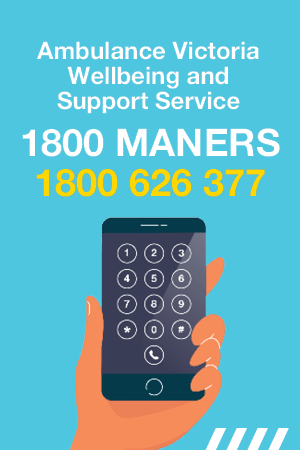Australian research has found that emergency services workers are more than twice as likely to report suicidal thoughts . By nature of their role, some professionals also have increased access to, and knowledge of lethal means which can elevate their risk of dying by suicide. However, exposure to suicide can also have a protective effect, by increasing awareness in AV employees and first responders to the impact suicide has on family members.
If you are concerned about your loved one, it is important to speak up. Talking about suicide does not ‘put ideas in their head’. A supportive and open conversation could save their life.

These warning signs can be direct, such as:
- threatening to hurt themselves
- talking about wanting to die or
- preparing to enact their plan, e.g. stockpiling medication.
They can also be indirect, such as:
- giving away possessions
- expressing hopelessness or worthlessness or
- becoming increasingly impulsive and reckless in their behaviour, e.g. driving dangerously or taking illicit substances in increasing amounts.
For a more exhaustive list, see the Suicide Call Back Service here.
If you notice these warning signs, it is important to respond quickly. The two most important things you can do are listen, and help connect your loved one with mental health support.
Check out SuicideLine for further guidance on how to best support your loved one.
Make sure you take care of yourself too. Helping someone who is thinking about suicide can be stressful and mentally taxing. It’s easier to help someone else when you’re feeling settled yourself. Consider a plan for how you can maintain your own self-care whilst supporting your loved one, or engage with your own professional support.

If you are concerned about your loved one’s risk of suicide, these are the steps you can take to support them.

Step 1
Ask them directly: “Are you thinking about suicide?”
Try not to use vague or judgemental language like “you’re not thinking about doing something stupid are you?”

Step 2
If they say ‘yes’, actively listen and allow them to express how they are feeling. It can be a big relief for them to have someone to talk to.

Step 3
Take steps to keep the person safe. If you are really concerned, don’t leave them alone. If the person has items of lethal means for suicide on them or immediate access to them (e.g., knives, razor blades, lethal medications, rope) talk to them about handing it over safely. Where possible, take them to a safe place away from harm and distress triggers, where they might be able to calm down.

Step 4
Get them appropriate help. If they are a high risk of suicide, call a crisis line like SuicideLine 1300 651 251 or Triple Zero (000). Make plans for an immediate assessment by a Crisis and Assessment Team, GP or take the person to the Emergency Department of the local hospital.
It can be difficult to call 000 if your loved one is a paramedic. They may be worried about their privacy, or that they will know the people who respond. However, if they are at immediate risk, calling 000 is non-negotiable.
If the person is not in immediate danger, talk to them about who else they can involve for support. Do not agree to keep it a secret – explain that you need to tell others to keep them safe. Visit our Resources page for professional support services.
Both Beyond Blue and the Suicide Call Back Service have online or app-based suicide safety planning to help your loved one keep safe.
Headspace has resources and information on youth suicide, including group chats moderated by professionals on topics such as coping with suicidal thoughts and losing a loved one to death by suicide.

